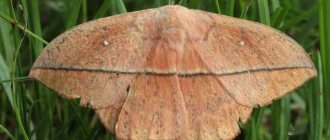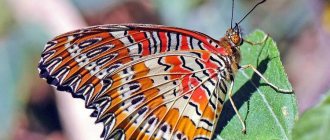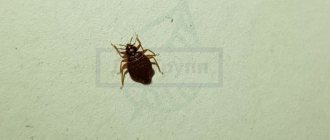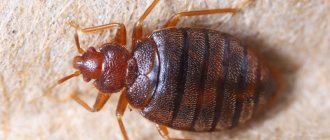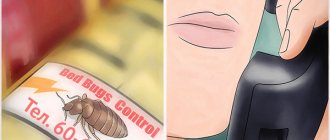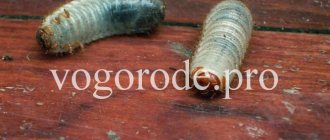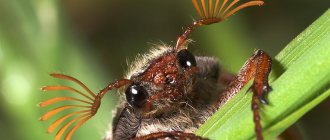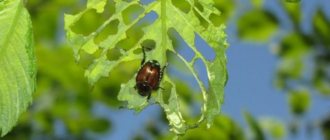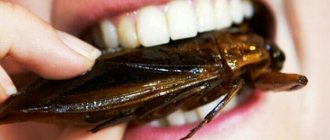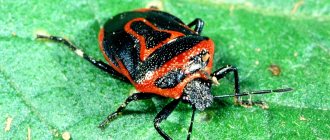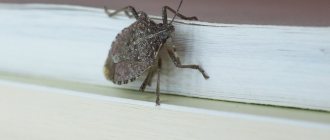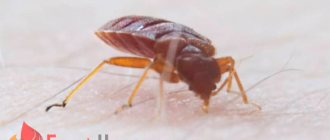Bed bugs are representatives of the order Hemiptera. Insects are ubiquitous; they live on land and in water. Numerous species of bedbugs are united by the presence of a piercing-sucking mouthpart. They have a jointed proboscis, with the help of which they absorb plant or animal food. Most species are capable of emitting an unpleasant, pungent odor that repels enemies.
What types of bedbugs are there?
All types of bedbugs are classified into 3 main groups:
- Useful. They are specially bred to protect the harvest of field, nectar-bearing, vegetable crops and fruit trees from pests. In the absence of Colorado potato beetles, thrips, aphids and other phytophages, beneficial bugs can support their livelihoods with the help of pollen and plant sap. However, they do not harm the crop.
- Harmful. This category includes dangerous parasitic bugs and herbivorous insects. The former have piercing-sucking mouthparts and settle closer to people and poultry. They mainly live in bedding and clothing. Herbivorous bugs pose a threat to crops.
- Harmless. These include soldier bugs, alder broodbugs and water bugs. They do not harm humans, domestic animals, livestock or crops. In rare cases, they can bite a person due to hunger, but they are not dangerous. Saliva does not contain pathogenic microorganisms and potential allergens. Bites from bugs that feed on plant sap do not cause plants to dry out or spoil fruit. They cannot be used in agriculture to protect crops from pests.
Chemicals
It is worth fighting the invasion of parasites with the help of special pesticides only in advanced cases, when the problem has acquired a large scale. It should be remembered that the use of such drugs can harm beneficial insects, birds, and animals, so you should resort to their help in emergency situations.
Such chemicals contain insecticidal components of the pyrethroid and organophosphorus groups. According to the type of action on pests, they are divided into systemic, contact and intestinal.
Agricultural pests
Phytophagous bugs are a type of insect that feeds on the sap of fruit plants and cereal crops. Colonies grow quickly, so damage from their activity reduces the volume and quality of the harvest.
Cabbage bug
Eurydema has a hard shell, an oval flattened body, reaching a length of less than 1 cm. The color is contrasting - in the area of the scutum and elytra, the exoskeleton is covered with symmetrical red and black patterns. They pose a threat to plants of the Cruciferous family. Females lay up to 300 eggs. Capable of destroying a cabbage crop in a few days. Insect activity increases with rising air temperatures.
Rapeseed bug
The insect belongs to the shield family. The pattern on the exoskeleton is variable, consisting mainly of light and dark spots, which can be blue-black, green, beige, orange or red. The white belly turns black after wintering. Body length - 6-9 mm. The pest affects cruciferous crops: radishes, rutabaga, turnips.
Light green stink bug
The body is painted green, length - from 12 to 15 mm. Before wintering, the stink bug changes its color to bronze, and in the spring it returns to the bright green shade of its shell. The prothorax is concave. The bug settles on deciduous trees and berry bushes. Poses a threat to raspberries and cereal crops.
Lined stink bug
The insect's chitin is bright red and orange with black longitudinal lines. The second name is the Italian bug. The body length reaches 10-11 mm. There are black mustaches on the head. Insects are classified as phytophages, as they feed on the foliage of shrubs and trees. They eat green shoots of fruit plants.
Attention! The larvae of the scale insect eat the inflorescences of dill, carrots and parsley.
Harmful turtle
Insects have the following features:
- hard, durable exoskeleton shell;
- oval shaped body;
- small size - up to 1.3 cm;
- The coloring is dirty, a mixture of yellow, brown and dark gray.
In winter, it hides in the forest thicket, where it buries itself in fallen leaves. On agricultural land it prefers to stay in warm outbuildings with reserves of cereal crops. Fields with rye and wheat are affected.
Important! Under the influence of the saliva of a harmful turtle, the structure of gluten in cereal crops changes, the ripening speed and quality of the crop decreases.
Berry bug
Insects are polyphagous. They prefer to suck the juice of berries, flowers and leaves of ornamental and oil-bearing plants, and fruit trees. After this, the buds and leaves dry out, the fruits fall or quickly deteriorate. The berry bug reaches 12 mm in length, the body is colored reddish-brown. The surface of the exoskeleton is covered with chitinous hairs. It is easily distinguished by its characteristic black and white rim along its abdomen.
Marbled bug
The insect is a dangerous pest that affects up to 300 plant species. They emit a pungent, unpleasant odor that repels birds and rodents. The body of the bug is pear-shaped. There are brown streaks of varying degrees of intensity on the back, which creates the effect of a marble pattern. With the onset of frost, bedbugs move into heated rooms. In the spring they reproduce quickly, laying up to 20-30 eggs at a time. Up to 3 generations are hatched per year.
Reference! From July 1, 2022, the Eurasian Economic Union included marbled bugs in the list of quarantine objects.
Can they live on the street?
Entomologists know firsthand whether bedbugs live on the street and whether they can exist outside a living space. They have been studying such insects for years.
But a non-specialist will not be able to immediately determine that the insect belongs to the street group . Street bugs are excellent opportunists. Garden plots, tropics or severe Siberian frosts suit them well.
Bedbugs are parasites
Parasitic type bedbugs are blood-sucking insects that settle closer to people. The danger is that they can carry infectious and viral diseases.
Bed sheets
Bed bugs are the main species of house bugs that feed exclusively on the blood of mammals. They often live in the sleeping areas of humans and pets. When in danger, they emit an unpleasant bug odor.
Cimex lectularius
It is a wingless, flat-shaped insect. Adults reach a size of up to 8 mm. The exoskeleton of a hungry parasite is dirty yellow or brown. After saturation with blood, it changes color to black or dark red.
The eggs of the parasites resemble small grains of rice - up to 1 mm in length. Painted white. Due to the content of a specific secretion produced by internal glands, when crushed, eggs emit a sharp, unpleasant odor.
Attention! Types of bed bugs appear regardless of the sanitary condition of the apartment.
Cimex adjunctus
Alternative names: white, mouse bug. It feeds on the blood of bats and rarely lives in human bedding. In appearance it does not differ from Cimex lectularius. The length of the body is from 3 to 8.5 mm, depending on the degree of saturation of the parasite with blood. Females are larger than males. A distinctive feature of a mouse bug is the presence of white hairs near the head. Insects do not have fore or hind wings.
Cimex hemipterus
The bug Cimex hemipterus is a blood-sucking insect. Parasites prefer to settle closer to people. They actively displace the bugs Cimex lectularius, with which they are similar in appearance. Distinctive features are thinner, elongated limbs and a less rounded body. With the onset of dusk, the activity of parasites decreases. They are highly resistant to chemical insecticides.
Oeciacus
An alternative name is the swallow bug, which parasitizes the bird species of the same name. The rounded body is painted white. Distributed in the European part of Russia.
Triatomine bug (Triatominae)
Belongs to the family of carnivores and is nocturnal. The insect has an elongated body, about 2 cm long. The exoskeleton is black or gray, with orange or red spots on the sides. Adults have hard wings and 3 pairs of limbs. On the cone-shaped head there are long antennae and a piercing-sucking mouthparts. The parasite's diet includes only the blood of mammals and birds. The proboscis is sensitive to infrared radiation.
An alternative name is the kissing bug, because its mouthparts are not capable of piercing the thick skin of the body. To suck blood, the insect bites a person in the soft tissues of the eyes and lips.
Important! The triatomine bug is one of the most dangerous types of parasite, as it can infect humans with Chagas disease or American trypanosomiasis.
Chicken bugs
The insects resemble chicken mites in appearance. They are brown in color and have a flattened body. They swell from drinking blood and change color to black or burgundy. They are nocturnal and hide in hard-to-reach crevices during the daytime. You can suspect the presence of parasites in birds by skin irritation and redness. Bedbug bites cause severe itching and pain, which is why the bird begins to peck at the affected area and injure itself with its claws.
Predators
Their diet consists of other insects and their larvae. From the family of predators, a group of so-called triatomine bugs is dangerous for people. This is a rather long creature (about 2 cm), black in color and resembling a stick. Although these bugs do not attack humans as often as their famous bed bugs, they transmit the trypanos parasite in their saliva.
Trypanos are carriers of the deadly Chagas virus, against which modern medicine does not yet have the means to fight . For this reason, the insect was nicknamed the “killer bug.” Some call it the "kissing bug." Indeed, the bite of this species is a real “kiss of Death”.
Signs of developing Chagas disease:
- Headache.
- Difficulty breathing.
- Heart pain.
- Cramps.
Fortunately, not a single case of detection of triatomine bugs has been recorded in Russia. Their habitat is the South American continent.
The following three subfamilies are not dangerous to humans, but they pose a direct threat to gardens, vegetable gardens, and agricultural field plantings.
Bugs living in water
Water bugs have adapted to life in the depths and on the surface of stagnant bodies of water. These include:
- belostoma;
- smoothie;
- water strider
These types of bedbugs have elongated limbs that widen towards the end. They perform the function of rowing to quickly move through the water film. They prefer to live by attaching themselves to algae and muddy bottoms. All types of water bugs are predators. Depending on the size of the imago, their prey will be insects, eggs, eggs and fish fry.
Important! Insects need air to breathe. They have retained developed wings, necessary for flying short distances in search of a new habitat.
Water striders
In the warm season they live on the surface of standing water bodies. Limbs covered with hydrophobic exoskeleton hairs help make specific movements along the water surface. The front legs are short and are used to capture and hold prey. Adult water striders reach a length of 30 mm. Compounded eyes and sensitive receptors on the limbs allow insects to receive information about the surrounding world and detect the slightest vibrations in the water film. They feed on invertebrates.
Gladysh
Large freshwater bugs have convex elytra. The color of the exoskeleton depends on the color of the bottom of the reservoir where they live. Adults spend most of their time at the surface of the water, resting their limbs on the water film. Unlike water striders, the insect's body is immersed in the water column. Thanks to this, the smoothie catches small insects and fish fry. In winter, water bugs crawl under the leaf layer. When the reservoir dries up, they fly to a new habitat. The rest of the time the wings are practically not used.
Belostoma
An alternative name is giant water bug. It has a flat, streamlined body with thickened forelimbs that perform a grasping function. Adults reach up to 15 cm in length and feed on frogs, salamanders and small fish. They can bite through human skin, but are not considered dangerous to swimmers.
Reference! The male takes care of the offspring, and the female lays her eggs on his back.
Lifespan and habitat
Despite its name, bed bugs do not live in beds. Insects choose dark places in the vicinity of the victim, where no one will disturb them. They are nocturnal, making them difficult to detect. During the day, these parasites sleep, pressing both their backs and bellies to the surface of the furniture.
Bedbugs most often form nests in the following places:
- in parts of the mattress that are adjacent to the bed frame;
- in the folds of furniture upholstery;
- between the headboard and the wall;
- behind loose wallpaper, wall hangings;
- between the battery and the wall;
- in bedside tables;
- in cabinets, incl. book;
- in floor cracks or baseboards.
The more parasites there are in a room, the wider their habitat. If there is a heavy population, pests can live in adjacent rooms. These insects move quickly, so they can get to the feeding site without any problems.
The life of a domestic insect is directly related to humans and the conditions available in the room - warmth and low air humidity. Temperatures affect the lifespan of the parasite without food. If the room is cool, the insect can survive up to 1 year. At high temperatures, metabolic processes accelerate, which shortens the life of the parasite. At average temperatures, bedbugs can live 14-15 months.
Bed bugs helpers
There are beneficial species of bedbugs whose diet includes herbivorous insect pests. They are specially bred and sold in quantities of 250-500 individuals to control whiteflies, thrips, spider mites and aphids.
Podisus maculiventris bug
The diet of bedbugs includes up to 90 species of agricultural pests:
- Colorado potato beetle larvae;
- American whitefly;
- bean beetle;
- gypsy moth.
Females are larger than males, the latter reaching a length of 11 mm. The color of the body varies from brown to dark beige. Females lay from 20 to 70 eggs, up to 1 mm in size. The larvae hatch after 1-1.5 months.
Anthocoris nemorum
Antocoris bugs inhabit deciduous fruit trees and shrubs, field and vegetable crops, and nectar-bearing plants. The body is elongated, colored brownish. Females are larger than males, reaching up to 4 mm in length. They are useful because they are polyphagous predators whose diet includes agricultural pests:
- eggs of sawflies that attack currants and gooseberries;
- pear sucker;
- red fruit mite;
- aphid;
- leaf rollers.
Predatory bugs of the genus Orius
A small insect of light brown color. Very voracious, used primarily in the fight against thrips, they eat the pest at any stage of development. Bugs of the genus Orius also eat:
- aphids;
- spider mites;
- whiteflies;
- eggs and cutworm caterpillars.
Predatory bugs are characterized by the fact that they destroy more insect pests than they need for nutrition. In the absence of phytophages, Orius can feed on pollen, which does not harm the crop.
Family of predators (Reduviidae)
They are the largest order of hemipteran representatives. They are nocturnal and suck eggs of insect pests. Predators are black, brown, and brown in color interspersed with orange, yellow and green.
Attention! Tropical species of predators can feed on human blood.
Macrolophus (fly family Miridae)
Macrolophus bugs are highly voracious. Over the entire lifespan of about 30 days, up to 2500 whitefly larvae and 3000 whitefly eggs are eaten. Adults have an elongated green body, 2.7-4 mm in length. The exoskeleton is covered with small hairs. The female is distinguished by an elongated abdomen with a pronounced ovipositor.
Macrolophus is used to control herbivorous pests of greenhouses, as it eats greenhouse and tobacco whiteflies, tomato moths and thrips.
Perillus bicentennial
It feeds on herbivorous insects. The main delicacy of Perillus is the Colorado potato beetle, which eats both eggs and larvae. If there are no beetles in the colony's habitat, the diet includes butterflies, caterpillars and umbrella species.
The bug is heat-loving and dies quickly at low temperatures. It has a black shell with bright orange patterns.
Horse flies, lace makers
The two most dangerous types for fruit trees are:
- Apple moth . Affects young apple deciduous shoots.
- Pear lacemaker . Mainly inhabitant of pears, cherries, and apple trees in the southern regions.
Measures to combat these types of bugs are simple: in the spring, whitewash the tree trunks and timely cleaning of garden areas from weeds.
Beneficial bugs
Some types of bedbugs are valuable helpers because they eat eggs, larvae, and adult pests. They protect crops from agricultural lands from Colorado potato beetles and butterfly caterpillars.
Picromerus
Helper insects have pronounced sexual dimorphism. Females are larger and more massive compared to males. The body of female bedbugs reaches 15 mm in length. Males have a slender body measuring less than 10 mm. The gray body of Picromerus is oval in shape, the limbs are colored reddish, the antennae and head are black. Despite the presence of developed wings, insects do not fly. Elytra are used for parachuting from tall plants.
Insects attack in groups and eat potential victims, for example:
- American whiteflies;
- Colorado potato beetles;
- cutworm caterpillars;
- sawflies;
- different types of larvae.
Arma is predatory
The insect feeds on pests of agricultural crops. The adult size is up to 14 mm. The shell is brown with many black spots. The predatory arma is thermophilic; colonies of bedbugs inhabit steppe and forest-steppe zones.
The diet includes:
- cutworm caterpillars;
- hawthorn;
- alder leaf beetle;
- Colorado potato beetle and its eggs.
Zicron blue
Zicron blue saves potatoes from Colorado potato beetles, which are their main source of food. It destroys only pest eggs; bedbugs do not feed on adult insects. Predators have a blue-green rounded body with a shiny shell. The period of activity occurs during the daytime.
Control measures
Traditional agrotechnical practices will help prevent the spread of bedbugs: adherence to planting dates, regular fertilizing, weeding, and timely watering. This will strengthen the immunity of cultivated plants and increase their resistance to pests. It is necessary to destroy weeds and excess organic matter - mown grass or fallen leaves, in which larvae and adult stink bugs often overwinter.
Another preventive way to prevent stink bugs from multiplying is to plant black cohosh along the perimeter of the site, at separate points or along paths. This perennial is popularly called black cohosh or black cohosh. The leaves and stems of the luxuriously flowering plant contain juice that is poisonous to bedbugs, but harmless to humans. Black cohosh flowers and leaves emit a pleasant aroma that insects cannot tolerate. Cohosh is easily propagated by seeds or by dividing the bush, does not require special care, blooms before frost, and lasts a long time when cut.
Chemicals
Not every chemical affects representatives of the suborder of bedbugs.
To get rid of a colony of parasites, insecticides are suitable:
Actellik is an ideal insect repellent for plants.
- “Aktellik”;
- “Alatar”;
- “Arrivo”;
- “Decis Profi”;
- “Spark double effect”;
- "Colibris";
- “Murakha”;
- “On the spot.”
When using chemicals, it is necessary to observe safety precautions and adhere to the manufacturer’s recommendations; during the preparation of the working fluid, do not change the concentration of the active substance.
Traditional methods
The principle of destroying garden parasites using folk methods is to spray crops with decoctions and infusions of plants:
- Pour 100 g of dry mustard powder into a 10-liter bucket, pour in 0.5 liters of hot water and stir. Add another 9.5 liters of water. Spray the suspension onto the plants, trying to wet both the upper and lower parts of the leaf blades.
- Pour 10 liters of hot water into a bucket, add 200-300 g of onion peels and leave for 3-5 days. Strain before use. In a similar way, you can prepare wormwood tincture.
The use of herbal decoctions and tinctures does not always get rid of pests the first time; 2-3 treatments may be required at intervals of several days. But such products are safe for people, birds, and warm-blooded animals.
Harmless bedbugs
These varieties do not harm humans, domestic animals, livestock and agricultural land.
Soldier bug
They belong to the red bug family. They do not pose a threat to humans and are not carriers of dangerous diseases. The soldiers are painted black, the elytra and the back of the exoskeleton have a red pattern. Hind wings are absent; there is an elongated proboscis. The basis of the soldiers' diet is the juices of fruit trees and liquid from the leaves; they do not harm agricultural lands. The leaves do not dry out after punctures, and the fruits do not spoil.
Alder bug
The alder brood bug gets its name from the female, which chooses only alder to lay eggs. Belongs to tree shield insects. It has an elongated body, reaching a length of 8 mm. They are colored light brown with many dark spots. Black and yellow stripes alternate on the edges of the wings.
Insects spend most of their lives on trees. Females do not leave the eggs and hatched larvae until they are able to independently obtain food and exist outside the nest. Hens do not pose a threat to humans.
What they look like
The body shape of most bugs is adapted to the living conditions, so it can be different. Bed bugs differ:
The bug is a harmful turtle.
- flat - parasitic creatures that become round after saturation;
- spherical - these are representatives of the family of earthen shields and desert ones;
- rod-shaped - a separate species, which includes Ghilianella filiventris;
- harmful turtles.
Some species are less than 1 mm long, and the largest reach 15 cm. Females are always larger than males.
The color of these insects can be of 2 types: repellent and display. All parasites, as well as those species with poorly developed odorous glands, have protective colors. Bright colors, which combine red, blue, green and black, are herbivorous species that have no enemies in nature.
Symptoms of infection
The most obvious evidence that there are bed bugs in the house is the discovery of an adult bed bug. At the same time, sometimes a living insect may indicate that the neighbors are being disinfested, and the surviving bloodsuckers have found a new home. Thus, when an adult is identified, the potential habitats of these parasites should be immediately inspected.
Bites on the body
The main symptom of bedbug infestation is bites that regularly appear on the skin. Red marks appear on the neck, back, cheeks and arms. Parasites do not bite in hairy areas; they choose places where the skin is thin and smooth. For this reason, children and women suffer more from these insects.
Bed bugs become active at night, so new bites can be detected in the morning immediately after waking up. Small red bumps are sometimes confused with an allergic reaction.
In this case, the bedbug bites are close to each other, forming a path. The number of red bumps on the skin increases every day along with the insect population, which is rapidly increasing. If the fight against parasites is not carried out, then a person can be bitten up to 300-350 times during the night.
Traces of blood on the bed
The substance that the parasite injects under the victim’s skin disrupts blood clotting. For this reason, a drop of blood appears at the site of the lesion, which, falling on the bed, leaves a mark. Bedding and waste products contaminate.
To remove stains, rinse the fabric in cold water. You can also remove traces with hydrogen peroxide (3-5%).
Hydrogen peroxide removes traces of blood stains after a bug bite.
The appearance of blackheads
Bedbugs are living creatures, so they have a digestive process and waste. Parasite feces are liquid and dark brown in color, but they quickly cool and become hard.
You can find excrement anywhere in your home. Most often, parasites accumulate near or on the bed. The smell of bedbug waste resembles bad cognac.
When the larva hatches from the egg, it molts several times as it grows. Each time it sheds its chitinous coating, which can be found on the floor, furniture, and windowsill.
Unpleasant smell
The sense of smell is a way for bedbugs to navigate in space, mate and notify their relatives of danger.
The aroma that these parasites exude is pleasant - sickly sweet, reminiscent of the smell of almonds or rotten raspberries. If there are a lot of insects in the apartment, the aroma becomes constant. If you smell this smell at least once in your life, you will no longer be able to confuse it with any other.
Interesting facts about insects
The first record of a bedbug was found in chronicles of the 400s. BC e. Aristotle claimed that these insects could cure the effects of a snake bite and get rid of ear infections. In the 18th century, bedbugs were used for medical purposes as a remedy for hysteria. In the 19th century began to invent ways to combat parasites - “bug cookers”, rubbing with perfume and even special spells.
In Thailand, large water bugs are a tasty treat offered to tourists in expensive restaurants and street stalls.
Predatory bugs Acanthaspis petax hunt ants, whose skins they wear on their backs. A kind of shield scares away spiders, which will never attack ants that have accumulated in large numbers.
The water bug Micronecta scholtzi is capable of producing a sound with a volume of up to 99.2 dB, which is comparable to the roar of a moving locomotive. Males chirp to attract females. To do this, they scratch their belly with their genitals. However, a person does not hear these sounds, because all the action takes place under water.
Prevention measures
Getting rid of bedbugs on your own is quite difficult. These are tenacious and rapidly developing insects. After the appearance of a female, within a week another full-fledged colony of parasites will be marching around the apartment. Even if the house is clean, preventive measures are needed in any case. Moreover, they do not require any excessive measures.
Redecorating
It is necessary to regularly inspect the walls, ceiling, doors and window sills for cracks. The sealed holes eliminate the possibility of parasites entering from the street and neighbors. Ventilation holes should be inspected carefully. There may be concentrations of a variety of insects.
The ventilation grille should have a fine mesh and fit tightly to the wall. It is best to go around the edges with silicone sealant. They should also treat plumbing cracks: the junction of pipes with the floor and on the walls. Such prevention will also prevent you from infecting others, especially if disinfestation is planned.
Inspection of things
At the slightest sign of the presence of bedbugs, bed linen, carpets and other interior items must be inspected. If excrement of parasites, legs or remains of chitinous cover are found on them, then take appropriate measures.
When buying upholstered furniture, be sure to inspect the seams and back walls. The presence of dark, dry spots indicates the initial development of a colony of parasites, and these are not always bedbugs, but clearly unwanted insects. Here it is enough to treat the problem area with insecticides.
Upon returning from trips, things should be washed in hot water (+60⁰С), and immediately, without leaving them in the laundry basket. The same goes for bags and hats.
